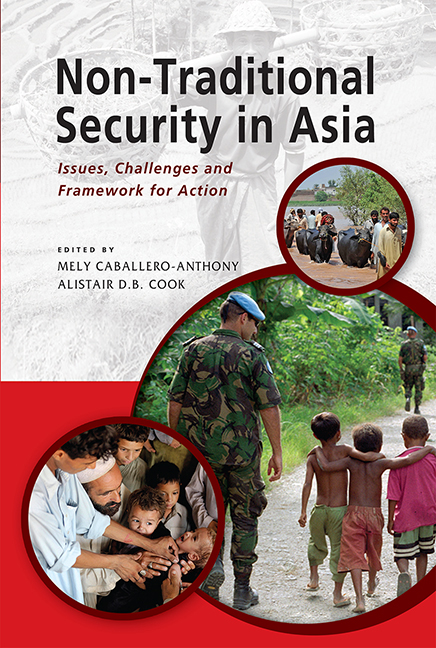9 - Transnational Crime
Published online by Cambridge University Press: 21 October 2015
Summary
Transnational organized crime is considered one of the major threats to human security, impeding the social, economic, political and cultural development of societies. Much attention has been given to the dynamics of professional criminal groups but little has been given to the existence of the markets in which they operate. This chapter argues that a focus on both of these is needed to address the underlying social, political, and economic factors that allow for transnational organized crime to thrive. In order to address the market dimensions of transnational organized crime, this chapter is framed as a “threat assessment”. Drawing data from reliable open-source information, it analyses the size and magnitude of high-priority crimes in Southeast Asia.
TRANSNATIONAL CRIME: AN OVERVIEW
The term “transnational crime” was coined by the then United Nations (UN) Crime and Criminal Justice Branch in 1974 in order to identify certain criminal phenomena transcending international boundaries. In order to provide more clarity, the UN in 1994 defines organized transnational crime as “offenses whose inception, prevention and/or direct effect or indirect effects involved more than one country”. Under this definition, a list of eighteen crimes were identified: money laundering, illicit drug trafficking, corruption and bribery of public officials and of party officials and elected representatives as defined in national legislation, infiltration of legal business, fraudulent bankruptcy, insurance fraud, computer crime, theft of intellectual property, illicit traffic in arms, terrorist activities, aircraft hijacking, sea piracy, hijacking on land, trafficking in persons, trade in human body parts, theft of art and cultural objects, environmental crime, and other offences committed by organized criminal groups.
APPROACHES TO TRANSNATIONAL CRIME
Broadly, transnational crime can be analysed from two perspectives: multicrime groups of professional criminals, and illicit markets (UNODC, June 2010). To date, most of the attention has been given to the first approach and this is reflected in the United Nations Convention against Transnational Organized Crime adopted on 15 November 2000. The Convention specifically focuses on the “organized criminal group” which is defined as:
a structured group of three or more persons, existing for a period of time and acting in concert with the aim of committing one or more serious crimes or offences … in order to obtain, directly or indirectly, a financial or other material benefit.
- Type
- Chapter
- Information
- Non-Traditional Security in AsiaIssues, Challenges and Framework for Action, pp. 234 - 266Publisher: ISEAS–Yusof Ishak InstitutePrint publication year: 2013



